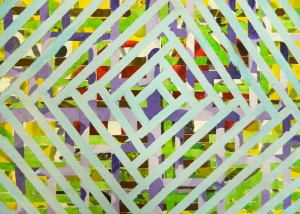Here in Omaha, there is a spectacular teacher named Jane Langenfeld. Spectacular enough, in fact, to be named Nebraska’s Secondary Art Educator of the Year. Being as in awe of her as I am, I wanted to collaborate on a project between her students and my students. We decided to create artworks based on written descriptions provided by students from the other school. Jane was the brains behind the operation with this project, and almost all the ideas here are hers. I am the one with the blog, however, so I get to write about it :)
The original idea for this collaboration comes from an old Albrecht Durer etching of a Rhinoceros. You can check out the story here, but in short, the artwork was created based only on a written description about an animal that he had never before seen. We utilized this idea, and a youtube video called “Never Seen, Never Will” was incorporated into this lesson. Watch it here:
Jane and I began by collecting images on a secret Pinterest board. Which means I had to sign up for Pinterest–gross. But it worked well for this project, and I’m forced to admit that Jane was right. Whether I continue to see my time sucked away on that site, however, remains to be seen. We tried to find images that were visually interesting, with a few being out of the ordinary. Here are a few examples:
We had our students begin with the descriptions of the artwork, using basic descriptions without much analyzation or interpretation. We had them write with the knowledge that someone would be creating a drawing based on their description. The teachers stayed out of the way with the descriptions, but the authors did run them by other students to see if anything needed to be cleaned up or changed before an artwork could be completed.
Some kids took a very direct approach, stating only facts about placement of objects, backgrounds, colors, and anything else needed. Others had a more creative slant, like my student who gave her sculpture of an armadillo both a name and a personality (her writing was entitled “Po, the North Facing Armadillo, if North Happened to be to Your Left”).
I think the best part of this process, for the teachers at least, was seeing our teaching come through in the writing. Jane and I talked about how some of the phrases we use ourselves also showed up in their descriptions, how they referenced artists we discuss, and shared information the way we might share it as teachers. It’s nice to know that sometimes, at least, our kids are actually listening.
When the paintings were finished, we decided to exchange artworks. The day I went to deliver our work, it just happened to be during a random autumn ice storm; I almost died twice, but that’s neither here nor there. We got our works traded, and not long after, we were able to do our big reveal. We put the artwork in the hands of the original writers, and we recorded their reactions when they first saw the artwork that had been based on their writing. Take a look:
We did simple recordings and posted them to YouTube, while Jane had her students use an app called Explain Everything, as well as Voice Thread. Those two apps worked really well for them to explain exactly what they were talking about as well as showing the actual picture directly alongside the artwork. I would love to share those videos also, but I don’t teach there and don’t have permission and don’t want to seem stalker-ish. Here are a few of our artistic results, though, side-by-side with the original pieces that were used for the descriptions.
This was a really good project, and my kids very much enjoyed the experience. They loved the idea of collaboration, and they loved doing the writing (mostly). The artworks were a lot of fun for some–especially if there was a good description from which to work–and a lot of frustration for others. That being said, I think each of my students who participated would want to do it again. Here are some of our pictures next to the original images:
Lastly, I will leave you with a few outtakes from our critique sessions. They should not be taken seriously, by the way :)






















































































































































